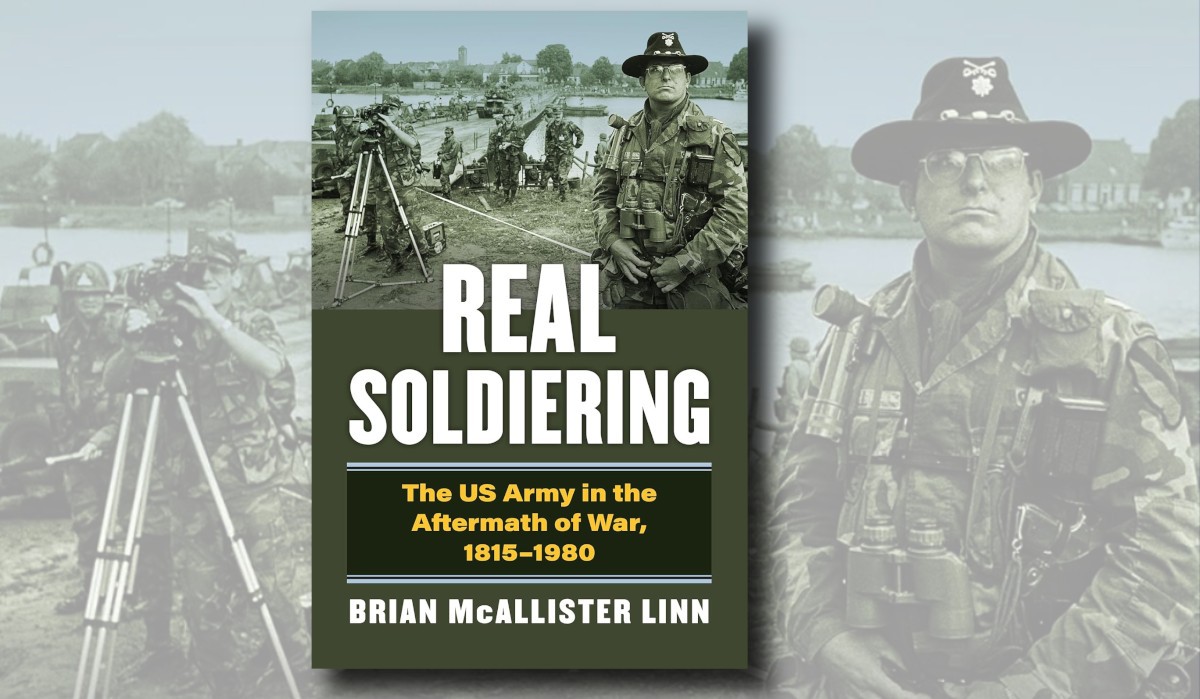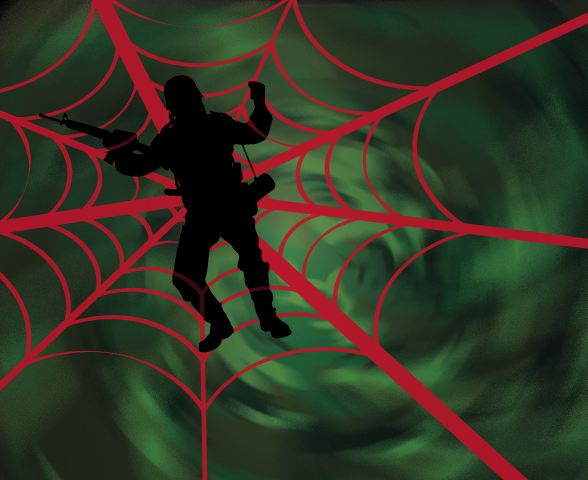“Riding from the Past into the Future”
The recent ‘Riding the Future Battlefield’ post on the Land Power Forum by Mr Wayne Shipp and Dr Jason Mazanov raised some excellent ideas for the potential study of future conflict and use of simulation to enhance Army’s understanding of the Future Operating Environment (FOE). However, in their enthusiasm to make their case, I fear the authors have been far too dismissive of the staff ride, an effective and proven Professional Military Education (PME) activity. This, combined with a misunderstanding of some key concepts, detracts from what is otherwise a good proposal. In my previous posting in Vietnam, I was fortunate to be involved in a number of excellent Australian and US PME activities, including staff rides and battlefield tours. I hope that my experience and observations can bring some clarity to the discussion.
Firstly, the authors have understated the Australian Army’s experience with staff rides. This is completely understandable as relatively few personnel have been involved in their planning and conduct since the Australian Army Research Centre (AARC) program commenced with the staff ride to Dien Bien Phu in Vietnam in late May – early June 2017. While the second AARC staff ride was recently conducted to the Malayan peninsula, (see also Twitter hashtag #AARCStaffRide2018) it has to be acknowledged that Army’s own program is in its early stages.
However, while the authors are correct in stating that the 2017 iteration was the Army’s ‘first staff ride of the modern era’, the pool of Australian Army personnel with staff ride experience is wider than is apparent at first glance. Australian Army officers at US and UK staff colleges at various levels have regularly attended staff rides. In particular, the USMC School of Advanced Warfighting (SAW) conducts a number of comprehensive staff rides to Europe and Asia (including Dien Bien Phu), which Australian officers have attended over many years. These include some now quite senior officers, including at least one Major General.
In addition, Australian Army officers have recently attended staff ride-like activities, sometimes rebadged as ‘battlefield study tours’, to differentiate them from standard battlefield tours and, perhaps, to avoid the genteel equestrian connotations that ‘staff ride’ evokes. Most notably, selected Army ACSC students on the ANU SDSC ‘Art of War’ course conducted a study tour to a number of Vietnamese battlefields in November 2017. While not strictly an ADF-conducted activity, the Operation Oboe battlefield study tour conducted by ANU SDSC in July 2017, with a focus on WW2 Australian amphibious operations, is an example of staff ride-like activities potentially available to Australian Army personnel. (See also the Twitter hashtag #AnuOboeTour).
Secondly, the differences between the key concepts of a staff ride, a tactical exercise without troops (TEWT) and a battlefield tour are not well known. As these three forms of ‘battlefield visiting’ have many things in common, they have often been mistaken for each other. The key factors are: who is doing the heavy lifting of presenting the material; and is the location a former battlefield or not? Drawing on the work of several UK practitioners, I offer the following table as a handy guide for telling them apart.
|
Battlefield Visit Ready Reckoner |
Who’s Presenting? |
||
|
Students |
Staff |
||
|
Is it on a former battlefield? |
No |
TEWT |
Field Lecture |
|
Yes |
Staff Ride |
Battlefield Tour |
|
Although Australian Army officers and soldiers tend to think of a TEWT as solely occurring in or near our domestic military training areas, our US, UK and NATO colleagues have also used TEWTs to study areas of potential future conflict, the recent Baltic Staff College visit to the ‘Suwalki Corridor’ being just one of several.
The difference between a battlefield tour and a staff ride is equally as important. On a battlefield tour, the military and/or academic leaders do the bulk of the research and presentations. An example is the Australian Army’s Church Awards battlefield tours of Vietnam in 2015 and 2016. While the soldiers were given introductory readings and lectures, the responsibility for the delivery of the historical content was on the tour leaders. On a staff ride, the students are responsible for the bulk of the research and presentations, with the tour leaders more involved in guiding the discussions that result. An example is the 2017 AHQ staff ride to Dien Bien Phu, where the participating officers were responsible for researching and presenting on selected topics at key locations on the battlefield.
Thirdly, while examining the German origin of staff rides, the authors have missed the significant evolution that has occurred in their conduct since the 19th century, and particularly since the 1960’s. Most of the serious academic study of the original German staff ride system points to them being more akin to a modern TEWT (ie a theoretical or future battlefield) versus the modern staff ride (ie an examination of an historic battlefield). Due to budgetary constraints and developments in educational theory in the last 40 or so years, the military utility and academic content of staff rides has come under intense scrutiny in the US and UK. As a result, professionally conducted staff rides in the US and UK involve significant preparation by staff and students, as long-established guidelines are updated to include comprehensive planning considerations and emerging educational theory to ensure cost-effective outcomes.
Far from being “akin to an on-site business school case study”, or “re-fighting” old battles from the perspective of “an historian” (in the singular) as the authors claim, properly conducted staff rides are academically rigorous, involve multiple historic perspectives, and challenge participants to think of their current and future roles in the profession of arms. A well-conducted staff ride will highlight the differences and similarities between the past and the present, reflecting not only good historical practice, but also the recognition of the eternal nature of war and its changing character. Staff rides have expanded beyond conventional state-on-state conflict to subjects as diverse as contingency operations , frontier conflict, and civil rights. A recent development in the US are staff rides to locations where conflicts have occurred in the recent past, such as Sri Lanka, Bosnia and Georgia. Given the persistence and growth of staff rides in the intermediate and higher military institutions in the US and UK, it is quite clear that our significant allies already consider the staff ride “a valuable component to development of a future focused strategic mindset”. (Where does this quote come from?)
Finally, having established some conceptual clarity and identified the advantages of professionally conducted staff rides, the authors’ recommendations can now be placed in their proper context. I think the use of simulation and other modern technology to enhance the staff ride experience is an excellent recommendation, particularly in the preliminary study phase. The US Army has already adopted this technology, developing a number of virtual staff rides, particularly where historic battlefields are either inaccessible or have changed significantly over time. It is not hard to imagine extending this into a simulation of the historic battle being ‘re-fought’ with modern weapon systems, although some significant work would be needed to address the wider operational and strategic context of the ‘re-fought’ battle, in order to be of value. While some potential foreign hosts of staff rides would be reluctant to have some historic battles ‘re-fought’ on their soil (even theoretically), a simulation back in Australia would appear to be a viable option.
However, there are no reasons why a TEWT cannot be combined with battlefield tours or staff rides, where students are given modern tactical problems to solve on actual battlefields, then exposed to the historical example (or vice versa).
Likewise, the authors’ suggestion of visiting potential future battlefields, either in actuality (eg Antarctica) or conceptually (eg complex urban environments in Australia) is a sound extension of the established concept of a TEWT. While it is difficult to predict the future with any great accuracy or successfully formulate doctrinal reorganization in response to assessed future needs, this doesn’t mean the Army shouldn’t be thinking deeply about the FOE. The exploration of this both ‘on the ground’ and ‘in the lab’ is a useful adjunct to staff rides, battlefield tours and other PME activities.
It is early days yet for the Australian Army’s own staff ride program, but our significant allies have recognized their benefits for some considerable time now. The comparative resources and time required for the conduct a staff ride will dictate that they need to be thoroughly conceived, planned and executed in order to achieve the desired outcome. Conducted in such a manner, the staff ride will continue to be, alongside TEWTs and battlefield tours, an important part of a balanced diet of PME activities within the Australian Army.



